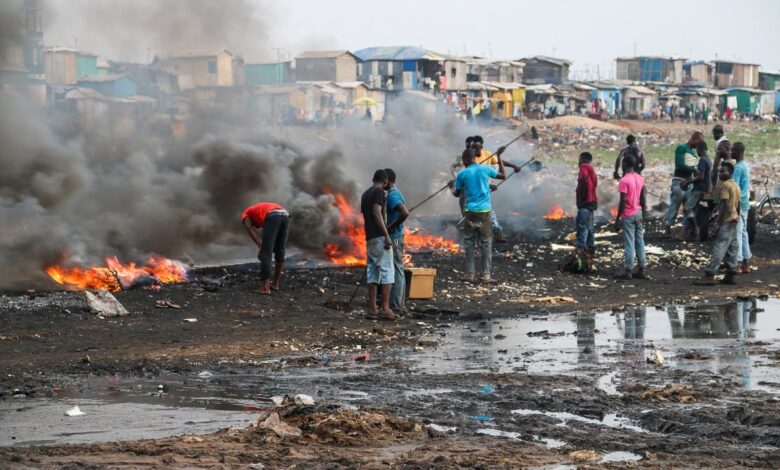Merging the Poverty and Environment Agendas

[ad_1]
New and Continuing Challenges
Despite decades of work defining poverty and trying to bring together the environment and poverty eradication agendas, people are still in poverty and the Earth’s ecosystems are near collapse. From a global perspective, ecosystem collapse will make everyone poorer. Conversely, exclusion and suffering in economies that value profit over people—in other words, poverty—may lead to short-term resource management choices, at the cost of long-term environmental quality. In the multilateral arena, an important question is whether poor countries are “victims” or “agents” of environmental degradation (Shyamsundar, 2002, p.13).
Nowhere is the overlap between the poverty and environment agendas more starkly illustrated than in climate change, ongoing conflicts, and the COVID-19 pandemic.
Climate change: The UN estimates that from 1998 to 2017, direct economic losses from disasters hit almost USD 3 trillion, with climate-related disasters accounting for 77% of the total (2019, p. 23). Over that period, climate-related and geophysical disasters claimed an estimated 1.3 million lives. More than 90% of all disasters were caused by floods, storms, droughts, heatwaves, or other extreme weather events exacerbated by climate change.
Economic losses resulting from climate change-related disasters are much higher in poorer countries (UN 2019, p.23).
Poverty is a major underlying driver of disaster risk, and the poorest countries and people experience a disproportionate share of damage and loss of life attributed to climate change. Hotter temperatures, rising sea levels, extreme weather events, and other impacts of climate change affect every country, with the severest impacts mainly hitting least developed countries and small island developing states. Extreme weather patterns—resulting in prolonged drought and floods—exacerbate existing inequities.
Disasters kill 130 people for every one million people in low-income countries compared to 18 per one million in high-income countries.
The World Bank estimates climate change will drive 68 million to 135 million people into poverty by 2030, particularly in Sub-Saharan Africa and South Asia—the regions where most of the global poor are concentrated (World Bank, 2020). If we do not cut greenhouse gas emissions now, the compounded effects will render many parts of these regions uninhabitable.
Countries of the global North have long considered that emerging economies have a responsibility to play their part in adopting stricter standards for greenhouse gas emissions. Countries of the global South, notably Brazil, India, China, and South Africa, counter that, despite their increased GDP, many of their people remain poor and should not be denied economic opportunities. They highlight that rich nations have effectively “outsourced” their responsibilities for emissions to the manufacturing centres of the global South, while still having the freedom to buy those products (Clémençon, 2012).
It has become clear, nevertheless, that climate change affects both the environmental and anti-poverty agendas (Roe, 2008). This realization also disrupts the fiction that human ingenuity and technology will be able to solve any problems in the future, given adequate levels of economic development.
Conflict: More than 40% of people living in poverty live in conflict-affected countries and suffer the most from violent conflict. It destroys their livelihoods while discouraging further investment in their communities. For example, extreme poverty rates nearly doubled between 2015 and 2018 in the Middle East and North Africa, spurred by the conflicts in Syria and Yemen (World Bank, 2020a). The World Bank estimates an additional 18 to 27 million people were pushed into poverty in 2020 in countries affected by conflict (World Bank, 2020b).
As conflict continues, the environmental base that many of the world’s poorest depend on for their livelihoods is negatively affected— directly through combat or indirectly in the chaos and desperate choices that war forces. Deforestation often increases due to overharvesting by communities that are suddenly reliant on wood and charcoal for fuel and heating. Environmental damage and degradation can also stem from resource extraction (oil, minerals, or timber) used to finance conflicts. Camps for refugees and internally displaced people can have large environmental footprints, particularly when they lack essential services, like water, sanitation, and waste management (Conflict and Environment Observatory, 2020).
COVID-19: The COVID-19 pandemic is caused by a zoonotic disease, one transmitted from wild animals to humans. The loss of biodiversity and wildlife habitat due to environmental degradation has created the conditions for the spread of COVID-19. Deforestation, changes in forest habitats, poorly regulated agriculture, and mismanaged urban growth have altered the composition of wildlife communities, greatly increased contact between humans and wildlife, and altered niches that harbor pathogens, increasing their chances of contact with humans (Platto et al., 2020).
COVID-19 has led to an unprecedented health, economic, and social crisis. Health systems in many countries have been driven to the brink of collapse. The livelihoods of half the global workforce have been severely affected. More than 1.6 billion students are out of school, and 71 million people are being pushed back into extreme poverty and hunger, erasing the modest progress made over the past 25 years (UN, 2020).
The pandemic has exposed and exacerbated existing systemic inequalities and injustices. In developed countries, fatality rates have been highest among marginalized groups and people of colour. In developing countries, the most marginalized—including those employed in the informal economy, women and girls, older people, children, persons with disabilities, Indigenous people, migrants, and refugees—are hit the hardest (UN, 2020). Those newly falling into or back into poverty due to the pandemic are likely to be more urban and educated than the chronic poor, more engaged in informal services and manufacturing and less in agriculture. In fact, middle-income countries, such as India and Nigeria, may be home to 75% of the new poor (World Bank, 2020a).
“The current moment of crisis is extraordinary. No prior disease has become a global threat so quickly as COVID-19. Never have the world’s poorest people resided so disproportionately in conflict-affected territories and countries. Changes in global weather patterns induced by human activity are unprecedented.”
[ad_2]
Read More



